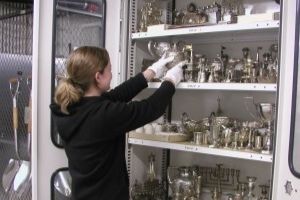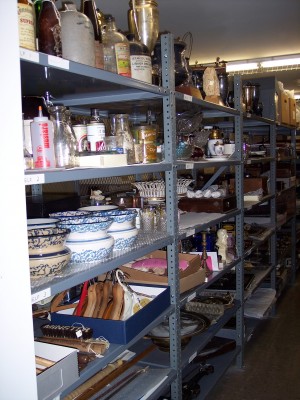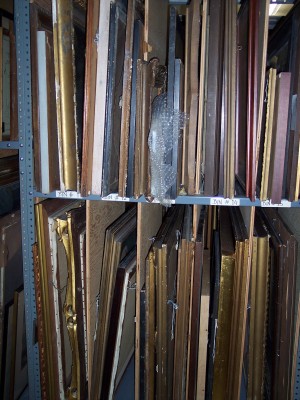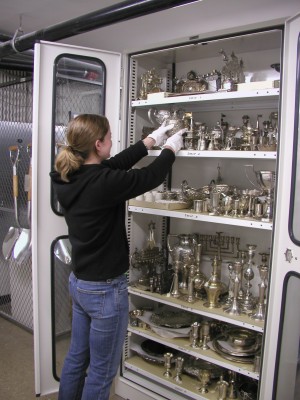Connecting Communities to Collections

A blog post by Deputy Director Deborah Cardin. To read more posts from Deborah click HERE.
The JMM is a member of the Council of American Jewish Museums (CAJM), an organization of 80+ members dedicated to the collection and interpretation of Jewish history and culture. CAJM offers a variety of services to its members including professional development opportunities through national conventions and regional meetups. The organization also seeks to take a leading role in addressing issues of concern to its membership by providing guidance and support whenever possible.
Yesterday I had the opportunity to travel to New York for a CAJM sponsored workshop exploring the topic of connecting communities to collections. This was a follow up to a previous “Idea Lab” that took place last spring that opened the conversation and explored several different strategies for making museum collections more relevant and accessible for community members. Concepts discussed at the first gathering included “Next Narratives” (launching collecting initiatives that help reshape conventional narratives of Jewish history), “Audacious Hospitality” (creating a more inclusive environment through creative programming and collecting), and “Strategic Alliances” (as a means of more effectively leveraging limited resources). Another suggestion was raised to radically rethink collecting strategies that would enable museums to think more strategically about the types of artifacts that they accession.
The goal of the second in a series of ongoing conversations on this topic was to discuss these strategies (and others) in more depth. More than 25 cultural leaders (not just from Jewish museums) and funders attended the program which took place at the Center for Jewish History. The morning was spent laying out some of the challenges that Jewish museums face in making their collections accessible. Many institutions have large collections that are not well documented with limited storage space.


Furthermore, it is difficult finding the necessary funds to properly care for artifact preservation.
Focus turned to strategies for engaging young audiences through collections and it was suggested that museums explore successful initiatives that have been employed to encourage millennial participation in Jewish culture and tradition such as Reboot and Moishe House.
New models for engaging audiences with collections were suggested such as lending artifacts that are seldom used to other community organizations like synagogues for display and possible use or working with organizations like Museum Hack to develop creative tours and programs. Interest was also expressed in developing partnerships with artists to help reinvigorate collections by inviting them to explore artifacts in storage and to create art installations based on their interpretation of objects. Examples of successful projects that make use of contemporary artists include the Israel Museum.

One idea for new types of partnerships is for Jewish museums to work with non-Jewish organizations to help them more fully interpret Jewish content in their collections. Jewish funders are often more interested in supporting work at non-Jewish institutions because of the perception that it will be viewed by a larger more diverse audiences.
In the afternoon, we split up and worked in small groups to tackle specific issues and to come up with a concrete proposal for what CAJM might do to help provide solutions. My group was tasked with exploring how to develop trust between museum staff who wants to protect collections and often is concerned about possible infringements on its role as collections’ guardians and those who want to open up access to collections in new ways. We suggested that CAJM could develop a set of guidelines that would help its members reexamine collections policies as well as share stories of successful models for connecting collections to community. Another idea is for CAJM to provide small grants to organizations to encourage innovation in this area. We also explored the possibility of convening a small group of museums to examine where the gaps are in collections – i.e. do our collections represent the current faces of our Jewish communities?
All in all, the day was productive with lots of interesting conversation surrounding the topic of collections and audience engagement.

1 reply on “Connecting Communities to Collections”
Great to see such care and thought been taken into preserving such special antique collectible artifacts. Working in the antique silver industry we feel the same and realize the importance of item preservation and care.